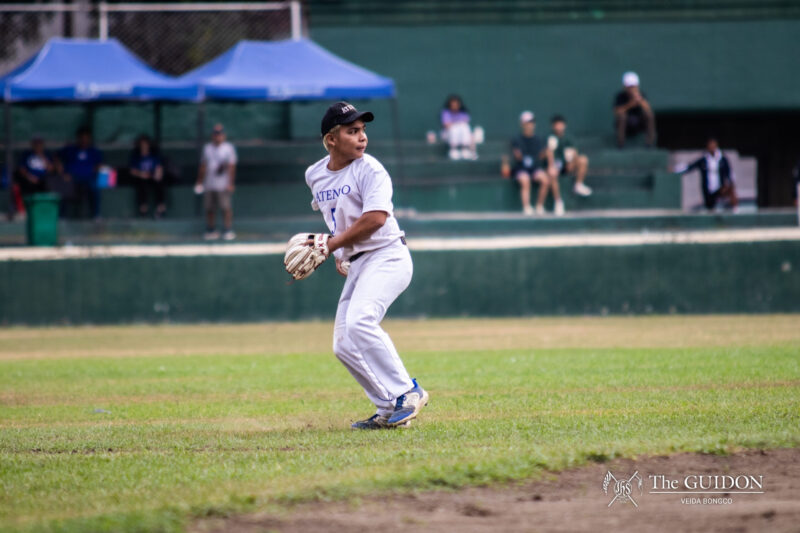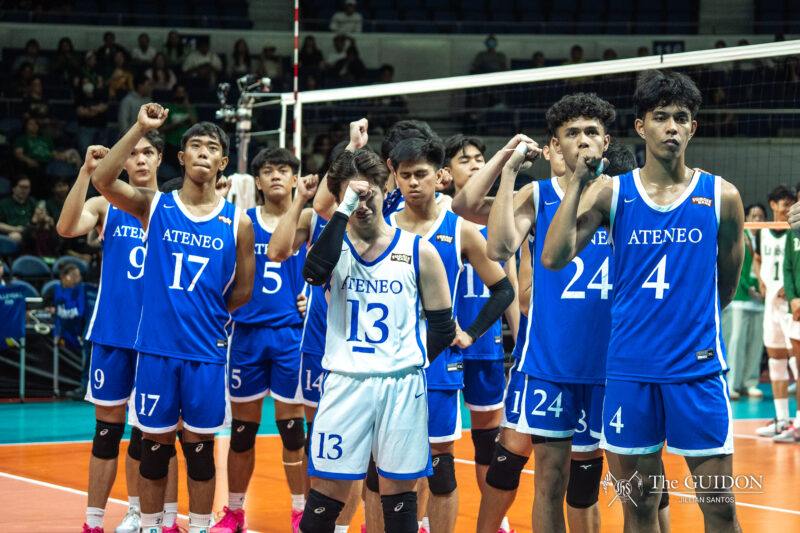AS THE curtain-raiser of the 27th Buklod Atenista, the ratification of the Ateneo Youth Agenda (AYA) was the first task, in the long list of obligations, to be completed by the student councils of the five Ateneo universities nationwide as a congress. For these student councils, it is imperative that their mission−through AYA−is clear.
AYA is a common agenda among the five Ateneo universities created to guide them in their engagement with the local and national government.
Aware that the elections were approaching, these student councils wanted to compose an Ateneo youth constitution that would provide the winning candidates suggestions regarding the issues that require necessary attention.
Thus, the conceptualization of AYA began on October 31 of last school year at the 26th Buklod Atenista.
To come up with a common agenda, concern areas were brought up by the congress and each of the five Ateneo universities were assigned two or three issues to work on before the Buklod Atenista Youth Agenda (Bayan) conference on January 16 to 18.
However, this remained unfinished until its completion and ratification on May 26, at the 27th Buklod Atenista.
The Sanggunian, along with the other participating student councils of Buklod Atenista, is hoping that through AYA, the Ateneo youth could make a difference and contribute to achieving the dream of a better Philippines.
The five Ateneo universities include Ateneo de Manila, Ateneo de Zamboanga, Ateneo de Davao, Xavier University – Ateneo de Cagayan (XU), and Ateneo de Naga.
Room for thorough examination
It took two Buklod Atenista conventions before AYA was ratified. Buklod Secretary-General Gio Alejo said that the idea was conceptualized during the second to the last day of the 26th Buklod, so “there wasn’t really anything concrete that we could’ve done in the other remaining day of that conference.”
The length it took to finish AYA had its advantages. For one, Alejo said, “Having AYA created in the course of two Buklod conventions enabled the different student councils to examine more thoroughly the data that they gathered regarding the issues in which Ateneans are most inclined to be involved in.”
However, the original plan of presenting the AYA to the candidates of the 2010 elections was not actualized. Therefore, Buklod is planning to present AYA to each Ateneo University’s Local Government Units instead.
“More importantly, the different student councils should create a mechanism with the help of the Buklod Atenista Core Group to check on the progress of the different points raised in AYA,” Alejo added.
From 13 to three
In the preliminary stage of the AYA’s composition, the five student councils formulated 13 concern areas. At the Bayan conference, however, the panel assessing the list of concern areas felt that 13 was too much and “too general” for the Ateneo youth to handle at the moment.
Alejo stressed this point in his presentation of AYA at the Buklod Atenista Fellowship Lunch last May 26 at the Manuel V. Pangilinan Roof Deck.
“Sabi ng panel sa amin, ‘masyado pa kayong bata at hindi pa kayo experts sa mga topics na pinili niyo’ (The panel told us, ‘you’re still young and aren’t experts of the topics that you’ve chosen [for AYA]’),” said Alejo.
After long deliberations and with the panel’s comments in mind, the five student councils eventually trimmed down the concern areas to three. They decided that the “action points” of AYA will focus on education, economy, and good governance.
Ratified and ready to go
Almost seven months after its inception, the three-point agenda has been made clear and AYA has finally been ratified. Education will be labeled as the Personal Agenda, Economy as the Social Agenda, and Good Governance as the Moral Agenda.
Asked what the role of the Loyola Schools studentry will be, Sanggu President Rob Roque confirmed that every student’s involvement can be of big help to AYA’s cause.
“The [Ateneo de Manila University] Buklod delegation has yet to ‘operationalize’ the adoption of the agenda but [it will] channel the energies of the student body toward the implementation of the agenda,” said Roque.
“A dialogue with the National Youth Commission will also be helpful in determining how the Ateneo Youth Agenda can be improved in the future versions that will be done,” Alejo added.
According to Roque, the direction of the Buklod Atenista in implementing AYA is local – a possible problem because the Sanggunian “has not been able to engage local government on issues” – but he saw it as “a room for growth of the Sanggunian”.
XU ambassador Edz Del Rosario shared Roque’s view on the AYA and expressed his delight in participating in the 27th Buklod Atenista.
“The Ateneo Youth Agenda, for our school will be localized. We’ll be addressing pertinent issues in the school and in the locality. It’s quite overwhelming that I’m part of this whole thing [Buklod Atenista],” said Del Rosario.
The execution of AYA will be monitored by the Buklod Atenista Core Group and the five ambassadors of the five Ateneo universities. The permanent Secretariat, the Ateneo de Manila Sanggu, will collate the reports of the schools regarding the progress being made in their respective areas.








[…] Councils set nation-building agenda « The GUIDON […]